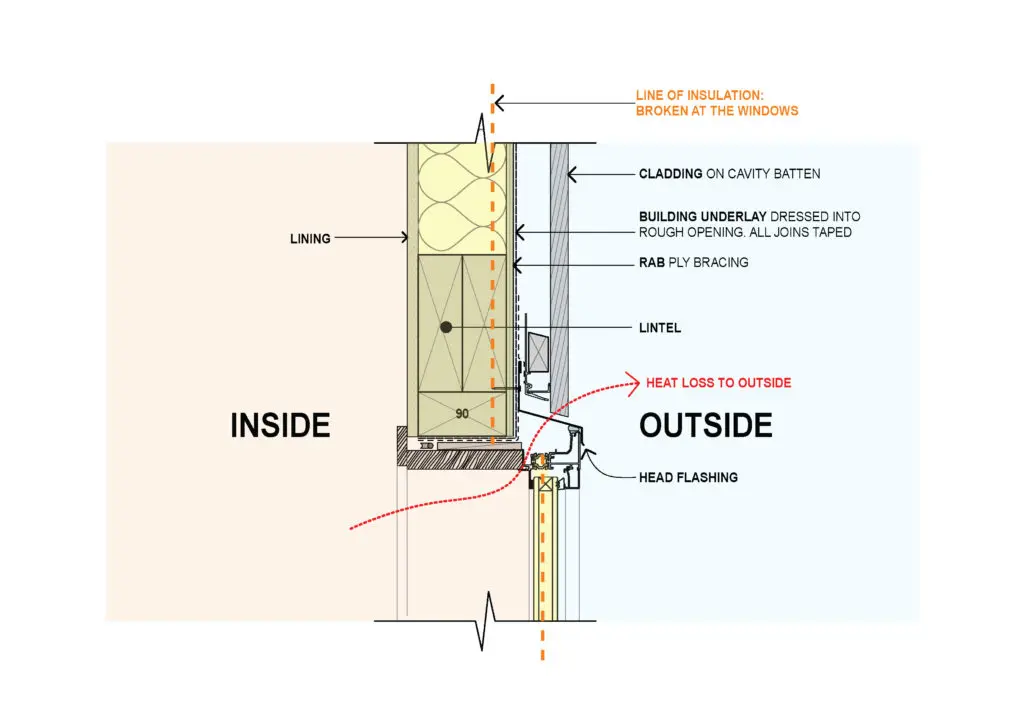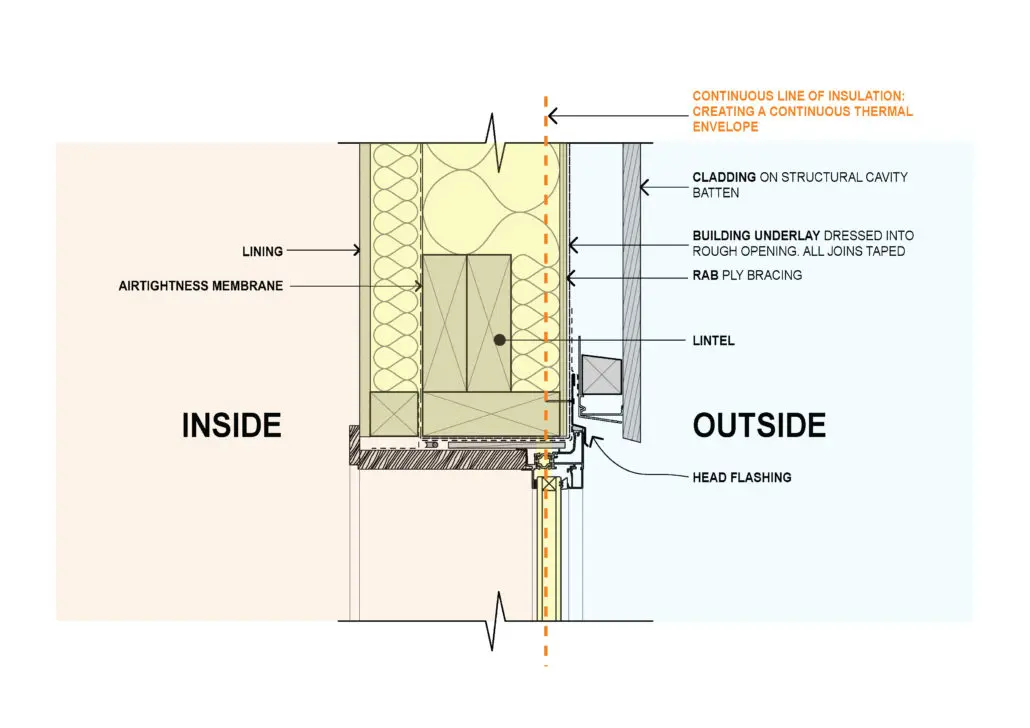Careful detailing improves performance of thermally broken aluminium windows:
Windows play a big part in the overall thermal performance of your home, and it is becoming increasingly common for thermally broken aluminium window frames to be specified. What most people are unaware of, however, is that how these windows are installed will greatly affect their performance, and therefore the overall performance of your home. If thermally broken windows are installed to standard NZ window installation methods, then the increased performance (and the cost of this), is largely wasted.
Standard aluminium windows vs thermally broken aluminium windows
Standard aluminium windows are made from a single profile of aluminium. The aluminium is in contact with both the inside of your home (warm), and the outside of your home (cold). Aluminium conducts heat well, and the aluminium window frames conduct heat from inside of your home, to the outside of your home. This heat loss is unavoidable with standard aluminium frames, and means that you will need to use more energy to heat your home, to constantly replace the heat that is lost to the outside. Thermally broken windows are manufactured with a thermal barrier between the inside and outside of the window frames. This is designed to reduce heat loss.
Installation methods
Typical windows are installed with a standard ‘face fixed’ method. In this method the windows sit with their outer flange over the outside face of the cladding. If a thermally broken window is installed with this technique, then the thermal break will not be positioned correctly, and the inside part of the window frame will still be in contact with the outside air. This means that the thermal break is by-passed, and heat loss still occurs.

By pushing the thermally broken windows back further into the framing line, there is a dramatic increase in the performance of the window. The thermal break in the aluminium window frames now lines up with the wall insulation. This creates a continuous thermal envelope. This installation technique gets the very best performance out of the windows, minimising heat loss and condensation. The importance of a continuous thermal envelope also applies to the positioning of high performance timber or PVC windows.

We carefully detail each junction of your home in a similar manner, to create a warmer, healthier and more energy efficient home.





